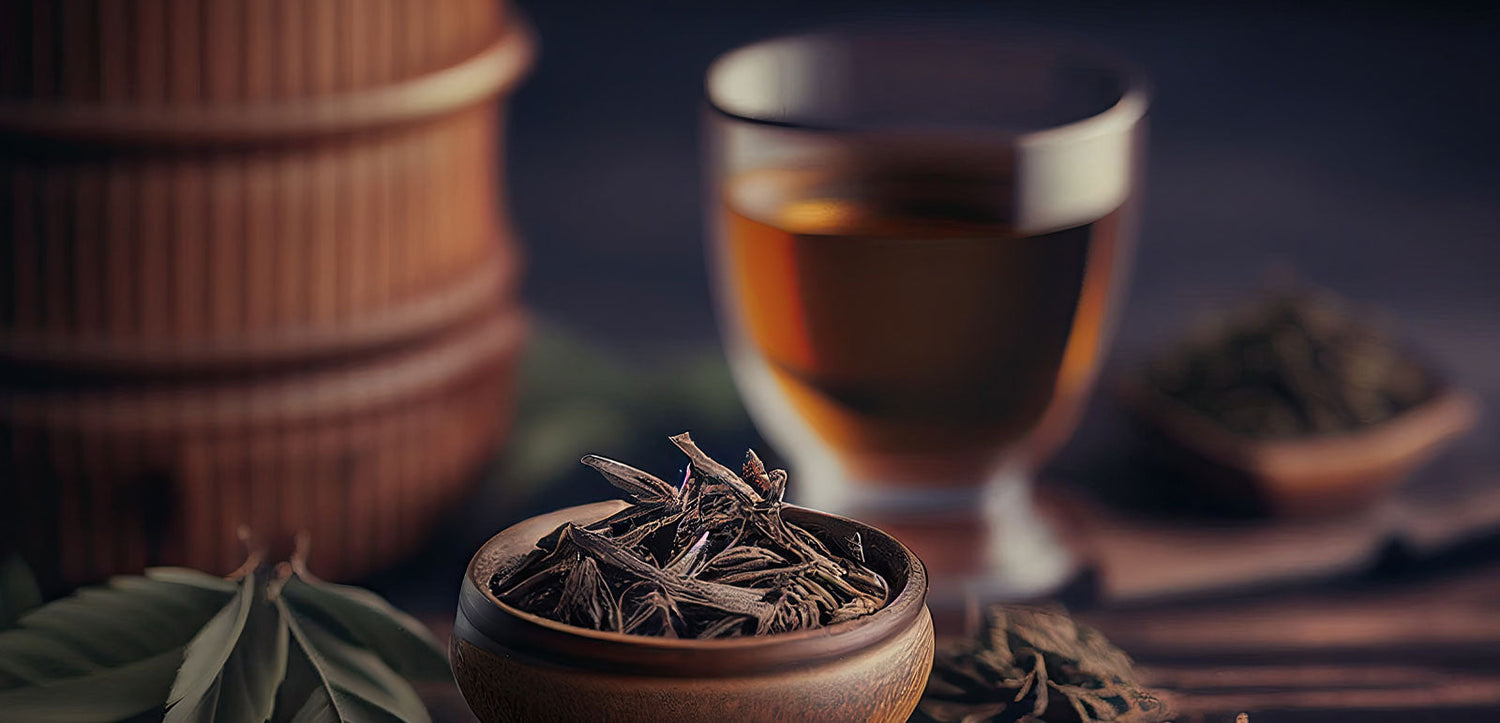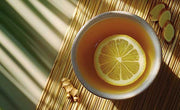What is Hojicha Tea? A Guide to a Unique Roasted Green Tea

Hojicha is a distinctive Japanese green tea known for its rich, smoky flavor and warm, reddish-brown hue.
After the typical green tea steaming process, Hojicha is then roasted over charcoal. This additional step gives it a unique aroma and a naturally sweet, nutty taste. Roasting the leaves also reduces its caffeine content. This makes it a popular choice for those looking for a low-caffeine alternative to other types of green tea.
Let's explore the origins, flavor profile, health benefits, and caffeine content of Hojicha. Find out why roasted green tea is so popular worldwide.
Origins and History of Hojicha
Hojicha originated in Japan in the 1920s when tea merchants in Kyoto began roasting leftover green tea leaves, stems, and twigs over charcoal. This method not only created a new, delicious tea but also helped reduce waste.
Over time, this roasted tea became a favorite among tea drinkers for its smooth, toasty flavor and lower caffeine levels, making it a preferred choice for evening consumption.
Today, it is commonly enjoyed in Japan and around the world, often served hot in colder months and cold-brewed for a refreshing summer drink.

How is Hojicha Made?
The process of making Hojicha begins with harvesting mature tea leaves from the Camellia sinensis plant. These leaves are first steamed, just like traditional Japanese green teas, to prevent oxidation.
However, instead of being dried immediately, they are roasted at high temperatures, which alters their chemical composition and flavor profile.
The roasting process caramelizes the natural sugars in the leaves, removing much of the bitterness and astringency found in other green teas. This results in a smooth, slightly sweet, and smoky tea with a reddish-brown liquor.
There are three different grades, depending on which part of the tea plant is used:
• Bancha – Lower-grade, mature tea leaves harvested later in the season.
• Sencha – Higher-quality green tea leaves, considered a premium variety.
• Kukicha (Twig Tea) – A blend made from stems and twigs, which contains even less caffeine.
What Does Hojicha Taste Like?
Hojicha has a warm, earthy, and smoky flavor with hints of caramel, roasted nuts, and cocoa. Since the roasting process reduces its bitterness, it is naturally mild and easy to drink. Unlike many green teas that have a grassy or vegetal taste, Hojicha offers a comforting and cozy drinking experience, making it a great choice for tea lovers who prefer milder flavors.

Is Hojicha Caffeinated?
Yes, a cup of Hojicha does contain caffeine, but significantly less than other green teas. The roasting process breaks down much of the caffeine present in the leaves, making it one of the lowest-caffeine Japanese green teas available.
How Much Caffeine is in Hojicha?
The exact caffeine content of green tea depends on the type of tea leaves used and how it is brewed. Here is a cup by cup comparison of an average 8 oz serving:
• Hojicha | About 7-20 mg of caffeine
• Sencha green tea | About 30-50 mg of caffeine
• Matcha powdered green tea | About 60-80 mg of caffeine
• A typical cup of coffee | 80-100 mg of caffeine.
Since Hojicha is often made from mature leaves, stems, or twigs, it naturally has less caffeine than younger leaves like those used in Sencha or Matcha.
Additionally, because the roasting process further reduces caffeine levels, Hojicha is a great option for those who are sensitive to caffeine or looking for a calming tea to drink in the evening.
Health Benefits of Hojicha
Aside from being low in caffeine, the health benefits of roasted green tea include:
1. Rich in Antioxidants – Like other green teas, Hojicha contains catechins and polyphenols that help protect the body from oxidative stress.
While the antioxidant levels in Hojicha may be reduced during roasting, it still retains a significant amount of beneficial compounds, including catechins and polyphenols.
2. Good for Digestion – The warm, roasted nature of Hojicha is gentle on the stomach and can aid digestion.
3. Calming and Relaxing – Hojicha contains L-theanine, an amino acid that promotes relaxation without causing drowsiness.
4. Supports Heart Health – Regular consumption of green tea, including Hojicha, may help lower blood pressure and improve cardiovascular health.
5. Low in Acidity – Unlike coffee or strong black teas, Hojicha is mild on the stomach, making it a great choice for those with acid sensitivity.
How to Brew Hojicha
Hojicha is easy to prepare and forgiving when it comes to steeping times, unlike some delicate green teas that can become bitter if over-brewed.
Hot Brew Method:
1. Use 1 teaspoon of loose-leaf tea per 8 oz (240 ml) of water.
2. Heat water to 180°F (80°C) (avoid boiling water to prevent scorching the leaves).
3. Steep for 2-3 minutes. Adjust steeping time based on taste preference.
4. Drink hojicha as is or with some whipped milk for a creamy hojicha latte.
Cold Brew Method:
1. Add 2 teaspoons of loose-leaf tea to 16 oz (500 ml) of cold water.
2. Let it steep in the refrigerator for 6-8 hours or overnight.
3. Strain and serve chilled or over ice.
Conclusion
Hojicha is a delicious and versatile Japanese roasted green tea that offers a warm, nutty flavor and a relaxing tea-drinking experience. With its low caffeine content, smooth taste, and health benefits, it is an excellent choice for those looking to enjoy a comforting cup of tea any time of the day.
Whether you prefer it hot or cold, it is a must-try for tea lovers who appreciate the rich flavors of roasted teas.
Would you give Hojicha a try? Let us know your thoughts!






